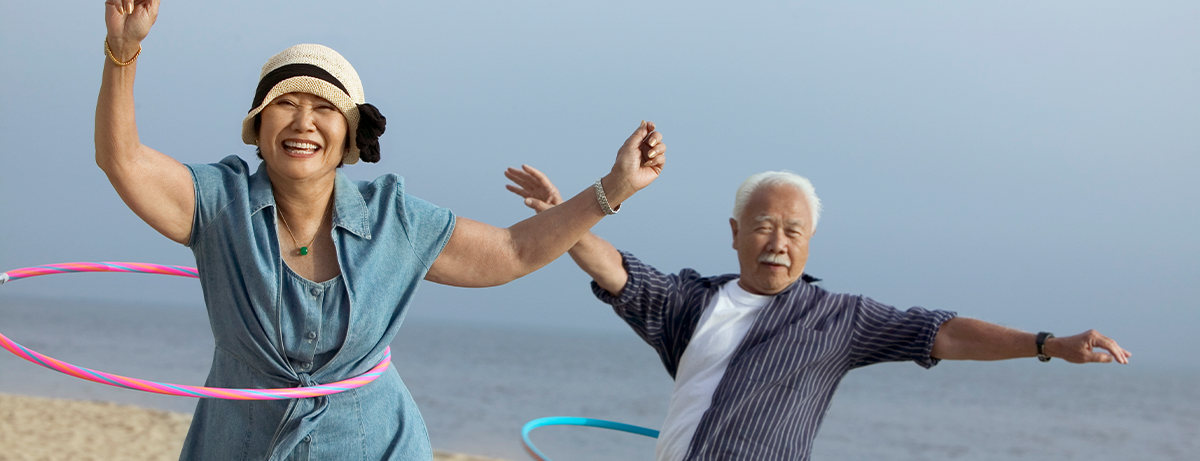Hoopmania

Not just child’s play, hula hooping is a workout worth considering—according to researchers and hoopers
Anyone who thinks that exercise has to be drudgery hasn’t tried hula hooping. When a brightly colored hoop is swiveling around your hips to the rhythms of upbeat music, it’s easy to forget that you’re doing something that’s good for your body.
A study sponsored by the American Council on Exercise found that participants burned about 210 calories per 30-minute session of hooping. In fact, hooping provides the same results—in terms of both calories burned and cardiovascular benefits—as boot-camp classes, step aerobics and cardio kickboxing.
We talked to Nicole Wong, founder of Cherry Hoops in San Francisco, which offers a variety of classes, to find out what all the hoopla is about.
Q: How did you get involved in hooping?
A: I used to be one of these people who would join gyms and end up doing it for a few weeks, then tapering off. A friend showed me www.hooping.org and I found that hooping was such a fun activity that it kept me going back. My classes go for one-hour sessions, but the time flies. At the end, people are usually disappointed that it’s the last song.
Q: Besides being a great cardio workout, does hooping have any other health benefits?
A: It’s also good for developing strength and flexibility and improving range of motion. Because we use the hoop on many different parts of the body and incorporate it into a dance, it gives people the opportunity to get a full-body workout.
Q: Can anybody do it?
A: We have people of all different ages and shapes and sizes, and everybody seems to be having a great time. People who are just beginning might start out with hooping around the waist, and as you continue on your hooping journey, there’s always more to learn. With the very youngest of hoopers, I’ll often modify the activities so that they’re more accessible for them. For hoopers who have mobility challenges, there are different parts of the body to hoop on. We might do arm hooping, and I’ve done some seated hooping with some participants.
Q: If someone wants to get started, what kind of hoop should they choose?
A: For people starting out and for people who have mobility challenges, we use larger, heavier hoops, which are easier to maintain around the core.
Q: You’re involved with Bay Area Hoopers. What do they do?
A: It’s a local community that hosts hoop jams. As part of that community, I host gatherings where I bring a sound system and music and hoops for people to borrow, and as adults and as children, we go out and practice hooping together. Having that community is one of the things that keeps many people coming back for more.
There are some activities that may seem intimidating or out of reach. But with hula hooping, it doesn’t matter if you’re “good” at it. You can’t pick up a hoop without smiling. Whether the hoop is clattering on the ground or you’re tossing it in the air, there’s something childlike about the experience that I think makes people safe in trying it out. There’s something that’s enjoyable about the experience of being in a circle.
Ready to get your hoop on? Here are some possibilities:
- Cherry Hoops (San Francisco), www.cherryhoops.com
- Bay Area Hoopers, www.bayareahoopers.org
- Hoop Power, www.hoop-power.com
